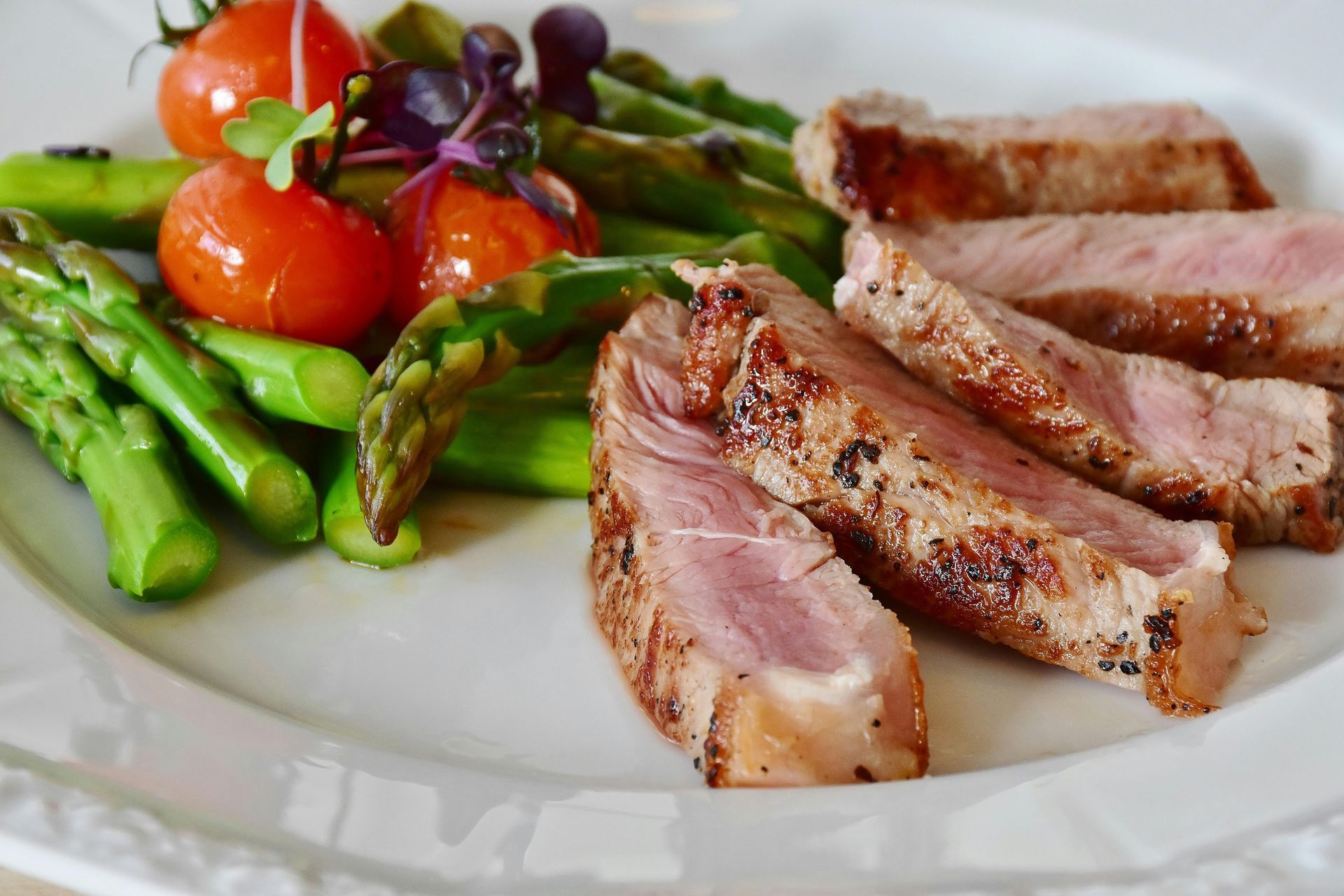Exploring the Link Between NAD+ IV Therapy and Cancer Treatment

Joseph Lopez • July 8, 2025
Table of Contents
Understanding the Complex Relationship Between NAD+ IV Therapy and Cancer
NAD+ IV therapy and cancer represents one of the most fascinating and complex areas in modern oncology research. This relationship isn't straightforward - NAD+ (nicotinamide adenine dinucleotide) can both support healthy immune function against tumors and potentially fuel cancer cell growth under certain conditions.
Key Facts About NAD+ IV Therapy and Cancer:
- Cancer cells often have disrupted NAD+ metabolism- they typically overexpress NAMPT enzymes and consume NAD+ at higher rates than healthy cells
- NAD+ depletion weakens anti-tumor immunity- T-cells need adequate NAD+ levels to fight cancer effectively
- IV delivery bypasses absorption limits- direct infusion can rapidly restore NAD+ levels that oral supplements cannot achieve
- Timing and context matter- NAD+ therapy may help or harm depending on cancer type, treatment stage, and patient factors
- Research is ongoing- five clinical trials are currently studying NAD+ precursors as cancer adjuvant therapy
The science shows that cancer cells have a "fragile NAD+ system" that creates both opportunities and risks. While some tumors exhibit NAD+ pathway vulnerabilities that can be targeted therapeutically, others may use supplemental NAD+ to fuel their growth.
The core challenge: determining when NAD+ IV therapy supports the body's natural cancer defenses versus when it might inadvertently help tumor cells thrive.
As Joseph Lopez, CEO of Pure IV Nevada with over a decade of experience in mobile IV therapy, I've witnessed growing interest in NAD+ IV therapy and cancer from both patients and healthcare providers seeking complementary wellness approaches. Our team of emergency room nurses and critical care professionals frequently encounters questions about NAD+ therapy's role in comprehensive cancer care strategies.

NAD+ Biology: From Healthy Cells to Tumor Metabolism
To understand NAD+ IV therapy and cancer, we must first grasp how this crucial molecule functions in both healthy and malignant cells. NAD+ serves as the "central catalyst of metabolism," enabling energy generation and biosynthesis by moving electrons between molecules. In healthy cells, NAD+ maintains cellular homeostasis through multiple pathways.
Cancer cells, however, exhibit a phenomenon called the Warburg effect - they shift toward anaerobic glycolysis even under normal oxygen conditions. This metabolic reprogramming favors rapid ATP production and biosynthetic precursor generation. While anaerobic glycolysis yields only 2 ATP per glucose compared with 32 ATP by oxidative phosphorylation, it provides cancer cells with the building blocks they need for rapid proliferation.
This altered metabolism creates an increased demand for NAD+ in cancer cells. Research shows that cancer cells rely on liftd NAD+/NADH and NADP+/NADPH ratios to support their high-glycolysis lifestyle, anabolic pathways including the pentose phosphate pathway, and serine and fatty acid synthesis.
Key enzymes become dysregulated in cancer:
- NAMPT (Nicotinamide phosphoribosyltransferase)- the rate-limiting enzyme in NAD+ salvage - is frequently overexpressed in colorectal, ovarian, breast, and gastric cancers
- CD38- an NAD+-consuming enzyme - is overexpressed in several hematological and solid tumors, contributing to immunosuppression
- PARP (Poly ADP-ribose polymerase)- drives high NAD+ turnover through ADP-ribosylation processes
- Sirtuins- NAD+-dependent deacetylases that regulate gene expression and stress responses
The research reveals a complex picture: cancer cells simultaneously depend on NAD+ for survival while also depleting it from their surrounding environment, creating a metabolic vulnerability that researchers are working to exploit therapeutically.
How Cancer Cells Rewire NAD+ Pathways
Cancer cells don't just use more NAD+ - they fundamentally rewire how they make and use it. The NAMPT-mediated salvage pathway becomes the primary route for NAD+ synthesis in most tumors, recycling nicotinamide back into NAD+. This pathway is so critical that NAMPT overexpression has become a hallmark of many cancer types.
The salvage pathway's dominance creates both opportunities and challenges. On one hand, cancer cells become dependent on this single pathway, making them vulnerable to NAMPT inhibitors. On the other hand, their high NAD+ turnover means they can rapidly consume any supplemental NAD+ provided through IV therapy.
Research shows that cancer cells maintain this high turnover to support several critical functions:
- Rapid DNA replication and repair through PARP activation
- Redox balance maintenance to handle increased reactive oxygen species
- Biosynthetic pathway support for building cellular components
- Epigenetic regulation through sirtuin activity
This metabolic rewiring explains why NAD+ IV therapy and cancer presents such a complex therapeutic challenge - we're dealing with cells that have fundamentally altered their relationship with this essential molecule.
CD38 and Tumor-Driven NAD+ Depletion in the Microenvironment
One of the most significant findies in NAD+ IV therapy and cancer research involves CD38, an ectoenzyme that depletes extracellular NAD+ in the tumor microenvironment. Over 90% of multiple myeloma cells express surface CD38, and it's overexpressed in numerous other hematological and solid tumors.
CD38 creates a "double hit" against anti-tumor immunity:
- Direct NAD+ depletion: CD38 consumes extracellular NAD+, starving immune cells of this essential molecule
- Adenosine production: CD38 cooperates with CD203a and CD73 to produce adenosine, which directly inhibits T cell and NK cell functions
Research demonstrates that NAD+ levels are significantly lower in tumor-infiltrating lymphocytes (TILs) compared to peripheral blood lymphocytes in ovarian cancer and melanoma models. This suggests that the tumor microenvironment actively depletes NAD+ from immune cells, weakening their ability to fight cancer.
The CD38-adenosine pathway represents a novel immunosuppressive mechanism that tumors use to evade immune surveillance. This findy has opened new therapeutic avenues, including CD38 inhibitors like kuromanin and isatuximab, which can prevent NAD+ depletion and restore immune function.
Interestingly, research shows that Th1/17 cells have 34 times higher intracellular NAD+ than Th17 cells, suggesting that NAD+ availability directly influences T cell differentiation toward more effective anti-tumor phenotypes.
What Exactly Is NAD+ IV Therapy?

NAD+ IV therapy involves the direct intravenous administration of nicotinamide adenine dinucleotide to rapidly lift systemic NAD+ levels. Unlike oral supplements that must steer digestive absorption and first-pass metabolism, IV delivery provides immediate bioavailability and can achieve plasma concentrations impossible through oral routes.
The therapy typically involves:
- Direct NAD+ infusion or NAD+ precursors like nicotinamide
- Dose ranges that vary widely based on indication and patient factors
- Co-infusion nutrients such as B-vitamins, magnesium, and antioxidants
- Controlled administration over 1-4 hours to minimize side effects
At Pure IV Nevada, our medically supervised protocols ensure safe administration with proper monitoring. Our emergency room nurses and critical care professionals understand the importance of controlled infusion rates and patient monitoring during NAD+ therapy.
Mechanism: How IV NAD+ Raises Systemic and Intracellular Levels
When NAD+ is administered intravenously, it creates a rapid plasma spike that can't be achieved through oral supplementation. The mechanism involves several steps:
- Plasma saturation: IV NAD+ immediately lifts blood levels to therapeutic ranges
- Transporter uptake: Cells uptake NAD+ through specific transporters and convert it to usable forms
- Conversion pathways: NAD+ is converted to NMN (nicotinamide mononucleotide) and NAM (nicotinamide) for cellular utilization
- Mitochondrial support: Liftd NAD+ supports mitochondrial function and energy production
Research indicates that cytosolic/nuclear free NAD+ pools normally maintain ~100 µM concentrations, while mitochondrial pools range from 250-500 µM. IV therapy can rapidly restore these levels when they've been depleted by disease, aging, or metabolic stress.
The pharmacokinetics of IV NAD+ show that while plasma levels spike rapidly, cellular uptake and utilization occur over hours to days. This extended timeframe allows for sustained metabolic support that may benefit both healthy cells and immune function.
NAD+ IV Therapy and Cancer—Core Concept
The core concept behind NAD+ IV therapy and cancer centers on selective metabolic support - providing NAD+ to boost healthy cell function and anti-tumor immunity while potentially exploiting cancer cells' metabolic vulnerabilities.
The rationale includes:
- Immune system support: Restoring NAD+ levels in immune cells to improve their anti-tumor activity
- Metabolic optimization: Supporting healthy cell metabolism during cancer treatment stress
- Combination potential: Enhancing the effectiveness of conventional cancer treatments
However, the concept also acknowledges significant risks. Cancer cells' high NAD+ demand means they could potentially use supplemental NAD+ to fuel their own growth. This creates a therapeutic window challenge - finding doses and timing that benefit the host while not feeding the tumor.
Research suggests that the key lies in understanding each cancer's specific NAD+ metabolism profile and timing therapy appropriately with conventional treatments.
Can NAD+ IV Therapy Benefit Cancer Care?
The question of whether NAD+ IV therapy and cancer care can work together beneficially is complex and depends heavily on context, timing, and cancer type. Current research suggests both potential benefits and significant risks that must be carefully weighed.
Pre-Clinical & Early Clinical Evidence
The most promising evidence for NAD+ IV therapy and cancer comes from preclinical studies focusing on immune system improvement. Research in mouse melanoma models showed that systemic nicotinamide administration increased T cell infiltration and IFN-γ secretion, leading to improved tumor control.
Key findings from preclinical research include:
- Improved CAR-T therapy: Nicotinamide supplementation improved CAR-T cell tumor eradication and survival in K562-CD19 tumor models
- Restored T cell function: NAD+ precursors reversed tumor-induced T cell exhaustion in multiple cancer models
- Improved immunotherapy response: Combining NAD+ precursors with checkpoint inhibitors showed synergistic effects
Currently, five clinical studies using nicotinamide as adjuvant therapy are ongoing for cancer patients. While specific results aren't yet available, these trials represent the first systematic investigation of NAD+ and T-cell response in human cancer treatment.
Early clinical observations suggest that NAD+ precursor supplementation may help with:
- Cancer-related fatigue
- Treatment-related toxicity
- Immune system recovery post-chemotherapy
- Overall quality of life during treatment
However, it's crucial to note that these studies primarily use oral NAD+ precursors rather than IV therapy, and results are still preliminary.
Could Extra NAD+ Fuel Tumor Growth?
This represents the most significant concern in NAD+ IV therapy and cancer research. The worry is well-founded: cancer cells exhibit higher NAD+ turnover and could potentially use supplemental NAD+ to fuel their proliferation.
Research reveals several concerning mechanisms:
- NAMPT overexpression: Many tumors overexpress NAMPT, allowing them to rapidly convert NAD+ precursors into usable NAD+
- High consumption rates: Cancer cells consume NAD+ at rates far exceeding normal cells
- PARP activation: Supplemental NAD+ could improve DNA repair in cancer cells, potentially reducing treatment effectiveness
However, the research also suggests this concern may be context-dependent:
- Timing matters: NAD+ supplementation during certain treatment phases may be beneficial while harmful during others
- Cancer type specificity: Some cancers may be more vulnerable to NAD+ manipulation than others
- Dose-dependent effects: Lower doses might support immunity without significantly fueling tumor growth
The "NAMPT vs CD38 paradox" illustrates this complexity - while NAMPT overexpression in tumors suggests they could use supplemental NAD+, CD38 overexpression simultaneously depletes NAD+ from the tumor microenvironment, potentially creating windows where supplementation helps immunity more than tumors.
Impact on Standard Treatments
NAD+ IV therapy and cancer treatment interactions represent an emerging area of research with both promising synergies and potential complications.
Potential synergistic effects include:
- Radiation sensitization: NAD+ depletion in cancer cells could improve radiation effectiveness
- PARP inhibitor improvement: Combining NAD+ depletion strategies with PARP inhibitors creates synthetic lethality
- Immunotherapy augmentation: Restored immune cell NAD+ levels could improve checkpoint inhibitor effectiveness
However, timing becomes critical. Research suggests that NAD+ supplementation might interfere with treatments that depend on NAD+ depletion in cancer cells, while potentially enhancing treatments that rely on robust immune function.
The key insight from current research is that NAD+ IV therapy and cancer treatment should be viewed as a precision medicine approach requiring careful coordination with oncology teams and potentially biomarker-guided patient selection.
Safety Profile, Risks & Ideal Candidates

Understanding the safety profile of NAD+ IV therapy and cancer is crucial for both patients and healthcare providers. While NAD+ is generally well-tolerated, cancer patients represent a unique population with specific considerations.
Common side effects of NAD+ IV therapy include:
- Flushing: Temporary redness and warmth, especially during initial infusion
- Nausea: Usually mild and manageable with slower infusion rates
- Fatigue: Paradoxical tiredness that typically resolves within hours
- Injection site reactions: Minimal with proper IV technique
At Pure IV Nevada, our experienced emergency room nurses monitor patients closely during infusion, adjusting rates as needed to minimize side effects while maintaining therapeutic effectiveness.
High-Risk Scenarios and When to Avoid
Certain cancer scenarios present heightened risks for NAD+ IV therapy and cancer patients:
Absolute contraindications may include:
- Rapidly proliferative tumors with high NAMPT expression
- Active hematologic malignancies with high blast counts
- Recent chemotherapy that depends on NAD+ depletion mechanisms
- Concurrent PARP inhibitor therapy without oncologist approval
Relative contraindications requiring careful evaluation:
- Solid tumors with unknown NAD+ metabolism profiles
- Immunocompromised states where immune stimulation could be problematic
- Concurrent radiation therapy timing considerations
The research emphasizes that clinical trials of NAMPT inhibitors like FK866 in advanced solid tumors showed no tumor remissions, highlighting the complexity of NAD+ manipulation in cancer therapy. This suggests that blanket approaches to NAD+ supplementation may not be appropriate for all cancer patients.
NAD+ IV Therapy and Cancer: Who May Benefit Most?
Current research suggests that certain cancer patient populations may benefit more from NAD+ IV therapy and cancer combinations:
Potentially beneficial scenarios:
- Immune-cold solid tumors: Cancers with low immune cell infiltration that might benefit from immune system improvement
- Aging cancer patients: Older patients with naturally declining NAD+ levels who need metabolic support
- Fatigue-dominant symptoms: Patients experiencing significant cancer-related fatigue that impacts quality of life
- Post-treatment recovery: Patients recovering from intensive treatments who need immune system restoration
Biomarker considerations for patient selection:
- CD38 expression levels: High CD38 tumors might benefit more from NAD+ restoration
- NAMPT expression: Low NAMPT tumors might be less likely to use supplemental NAD+
- Immune cell infiltration: Tumors with existing immune presence might respond better to NAD+ support
The research suggests that personalized approaches based on tumor biology and patient factors will be essential for safe and effective NAD+ IV therapy and cancer integration.
NAD+ IV Therapy vs. Oral Precursors

The choice between NAD+ IV therapy and cancer supportive care versus oral NAD+ precursors involves several important considerations that cancer patients and their healthcare teams must evaluate.
Bioavailability differences:
- IV therapy: Provides 100% bioavailability with immediate plasma elevation
- Oral supplements: Face absorption limitations and first-pass metabolism
- Plasma levels: IV can achieve therapeutic concentrations impossible through oral routes
- Cellular uptake: Both routes eventually require cellular transport mechanisms
Practical considerations:
- Cost efficiency: Oral supplements are significantly less expensive
- Convenience: Pills are easier than IV infusions
- Medical supervision: IV therapy requires professional administration
- Compliance: Oral supplements depend on patient adherence
Research indicates that oral studies used 3-6 grams of nicotinamide to attempt NAD+ elevation, while IV therapy can achieve similar or better results with lower doses due to direct delivery.
For cancer patients, the choice often depends on:
- Severity of NAD+ depletion: More severe depletion may require IV restoration
- Treatment timeline: Rapid restoration needs may favor IV therapy
- Concurrent treatments: Some cancer treatments may affect oral absorption
- Patient preferences: Individual tolerance and lifestyle factors
At Pure IV Nevada, we've observed that many patients prefer the rapid onset and assured delivery of IV therapy, especially when dealing with significant fatigue or absorption issues common during cancer treatment.
Emerging Trials & Future Directions
The field of NAD+ IV therapy and cancer is rapidly evolving, with several promising research directions and clinical trials underway.
Current clinical investigations:
- Phase I safety trials: Evaluating NAD+ precursor safety in cancer patients
- Combination studies: Testing nicotinamide with checkpoint blockade therapies
- CD38 antibody combinations: Investigating CD38 inhibitors with NAD+ supplementation
- Biomarker development: Identifying patients most likely to benefit
Key unanswered questions driving research:
- Optimal dosing: What doses maximize benefit while minimizing tumor feeding risk?
- Timing protocols: When during cancer treatment is NAD+ supplementation most beneficial?
- Patient selection: Which biomarkers predict response to NAD+ therapy?
- Combination strategies: How can NAD+ therapy best integrate with standard treatments?
- Long-term safety: What are the effects of prolonged NAD+ supplementation in cancer patients?
Emerging therapeutic approaches:
- Targeted delivery: Developing methods to deliver NAD+ specifically to immune cells
- Combination protocols: Pairing NAD+ therapy with specific cancer treatments
- Personalized dosing: Using biomarkers to guide individual treatment plans
- Novel formulations: Investigating different NAD+ precursors and delivery methods
The research pipeline suggests that NAD+ IV therapy and cancer will likely evolve toward precision medicine approaches, with treatment protocols custom to individual tumor biology and patient characteristics.
Frequently Asked Questions about NAD+ IV Therapy and Cancer
Does NAD+ IV therapy interfere with chemotherapy?
The interaction between NAD+ IV therapy and cancer chemotherapy is complex and depends on the specific drugs involved. Some chemotherapy agents work by depleting NAD+ in cancer cells, and supplementation could theoretically interfere with these mechanisms.
Current research suggests:
- Timing is crucial: NAD+ therapy might be beneficial between chemotherapy cycles but harmful during treatment
- Drug-specific interactions: Different chemotherapy agents have varying relationships with NAD+ metabolism
- Oncologist coordination: Any NAD+ therapy during chemotherapy requires careful medical supervision
We strongly recommend discussing NAD+ therapy with your oncology team before starting any supplementation program.
How often are NAD+ infusions needed during cancer care?
The frequency of NAD+ IV therapy and cancer supportive care varies significantly based on individual factors:
Typical protocols might include:
- Loading phase: 2-4 treatments over 1-2 weeks to rapidly restore levels
- Maintenance phase: Weekly or bi-weekly treatments to sustain levels
- Treatment-specific timing: Coordinated with chemotherapy or radiation schedules
- Symptom-driven approach: Treatments based on fatigue levels and recovery needs
Research suggests that a standard NAD+ loading phase consists of four treatments completed within 10 days, though cancer patients may require modified protocols based on their treatment schedules and tolerance.
Is there a way to test my NAD+ status before starting?
Currently, direct NAD+ testing isn't widely available in clinical practice, but several markers can indicate NAD+ status:
Potential assessment methods:
- Metabolic panels: Indirect indicators of cellular energy status
- Immune function tests: T-cell activity levels may reflect NAD+ adequacy
- Symptom assessment: Fatigue, cognitive function, and recovery patterns
- Research-based testing: Some specialized labs offer NAD+ metabolite testing
At Pure IV Nevada, we work with healthcare providers to evaluate each patient's individual needs and develop appropriate treatment protocols based on their specific situation and symptoms.
Conclusion
The relationship between NAD+ IV therapy and cancer represents one of the most complex and promising areas in integrative oncology. Our exploration reveals that this isn't a simple story of benefit or harm, but rather a nuanced therapeutic approach that requires careful consideration of timing, dosing, cancer type, and individual patient factors.
Key takeaways for patients and healthcare providers:
- Context matters: The same NAD+ therapy that could benefit immune function might also fuel certain types of cancer growth
- Timing is critical: When NAD+ therapy is administered relative to conventional treatments can determine success or failure
- Personalization is essential: Future approaches will likely require biomarker-guided patient selection
- Research is ongoing: Five clinical trials are currently investigating NAD+ precursors in cancer care
- Professional guidance is mandatory: Any consideration of NAD+ therapy during cancer treatment requires oncologist involvement
The emerging research suggests that NAD+ IV therapy and cancer care will evolve toward precision medicine approaches, where treatment protocols are custom to individual tumor biology, patient characteristics, and specific treatment phases.
At Pure IV Nevada, our experience providing medically-supervised IV therapy services has taught us the importance of individualized protocols and professional oversight. While we primarily serve trade shows and corporate wellness events, the same principles of careful assessment, proper monitoring, and coordinated care apply to any therapeutic IV intervention.
For cancer patients considering NAD+ therapy, we recommend:
- Consulting your oncology team before starting any supplementation
- Considering clinical trial participation if available
- Focusing on evidence-based approaches rather than unproven claims
- Prioritizing safety over unsubstantiated benefits
The future of NAD+ IV therapy and cancer care lies in continued research, careful clinical application, and the development of personalized treatment protocols that maximize benefits while minimizing risks. As this field evolves, patients and providers must work together to steer these complex therapeutic waters with both hope and caution.




